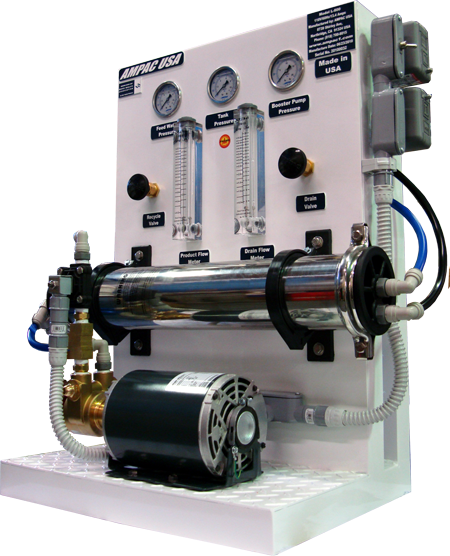A whole house reverse osmosis (RO) system is an investment in your family’s health and the longevity of your home’s plumbing and appliances. To ensure its optimal performance, regular maintenance is essential. This comprehensive guide will walk you through the steps required to maintain your system effectively.
Understanding Your Whole House RO System
Before diving into the maintenance procedures, it’s crucial to understand the components of your whole house RO system. Typically, the system includes:
- Pre-filters: These remove sediment, chlorine, and other larger particles.
- RO membrane: The core of the system, which filters out contaminants at a molecular level.
- Post-filters: These polish the water, removing any remaining tastes or odors.
- Storage tank: Holds the filtered water until it’s needed.
- Distribution pump: Ensures consistent water pressure throughout the house.
Routine Maintenance Checklist
1. Regular Filter Replacement
Filters are the workhorses of your RO system, capturing contaminants and preventing them from reaching the RO membrane. Regular replacement is key to maintaining system efficiency.
Pre-filters should be replaced every 6 to 12 months, depending on water quality and usage. Neglecting these can lead to membrane fouling and reduced system performance.
Post-filters typically need replacement every 12 months. These filters ensure your water is free from any residual tastes and odors, providing the final polish before it reaches your taps.
2. RO Membrane Care
The RO membrane is the most critical and expensive component of your system. It should be replaced every 2 to 3 years, but this can vary based on water quality and system usage.
To extend the membrane’s life:
- Ensure pre-filters are replaced on time.
- Regularly check for signs of fouling, such as reduced water pressure or taste changes.
- Conduct periodic cleanings with a compatible RO membrane cleaner.
3. System Sanitization
Sanitizing your whole house RO system annually is essential to prevent bacterial growth and ensure water safety.
Steps to sanitize:
- Turn off the water supply to the RO system.
- Drain the storage tank completely.
- Remove the pre and post-filters.
- Add a few tablespoons of household bleach to the pre-filter housing.
- Reassemble the system and turn on the water supply.
- Allow the bleach solution to circulate for a few hours.
- Flush the system thoroughly to remove any bleach residue before reinstalling new filters.
4. Storage Tank Maintenance
The storage tank should be checked annually to ensure it’s functioning correctly.
Steps to check the storage tank:
- Turn off the RO system and drain the tank.
- Inspect for any signs of damage or leaks.
- Check the tank’s air pressure (usually around 7-8 psi when empty). Adjust if necessary.
5. Inspecting for Leaks
Regularly inspect your system for any signs of leaks. Pay close attention to:
- Filter housings
- Connection points
- Faucets
Immediate action should be taken if any leaks are detected to prevent water damage and system inefficiency.
Performance Monitoring
1. Water Quality Testing
Regularly test your water quality to ensure your RO system is performing optimally. Testing kits are available that measure:
- Total Dissolved Solids (TDS)
- pH levels
- Chlorine levels
2. Pressure Checks
Monitor the water pressure throughout your home. Significant drops may indicate filter clogging or membrane fouling.
3. Flow Rate
A noticeable decrease in water flow can signify a problem within the system. Regularly check the flow rate to ensure your system is operating correctly.
Advanced Maintenance Tips
1. Installing a UV Sterilizer
For added protection against bacteria and viruses, consider installing a UV sterilizer post-RO system. This ensures any microorganisms that bypass the RO membrane are neutralized.
2. Annual Professional Inspection
While regular DIY maintenance is crucial, an annual professional inspection can help identify issues that may not be visible. A professional can:
- Conduct a thorough system check
- Test the integrity of the RO membrane
- Perform advanced cleaning and maintenance tasks
Troubleshooting Common Issues
1. Low Water Pressure
Low water pressure can be due to clogged filters, a fouled membrane, or issues with the distribution pump. Regular maintenance and timely filter replacements usually resolve this issue.
2. Unpleasant Taste or Odor
If you notice any changes in taste or odor, it could be due to exhausted post-filters or bacterial growth. Replace post-filters and sanitize the system as needed.
3. Frequent Filter Changes
If you find yourself changing filters more frequently than recommended, it may indicate poor incoming water quality. Consider installing additional pre-filtration to protect your RO system.
Conclusion
Maintaining your whole house reverse osmosis system is not just about ensuring clean and safe water; it’s about protecting your investment and ensuring the longevity of your home’s plumbing and appliances. By following this comprehensive guide and staying proactive with your maintenance routine, you can enjoy the benefits of purified water for years to come.











